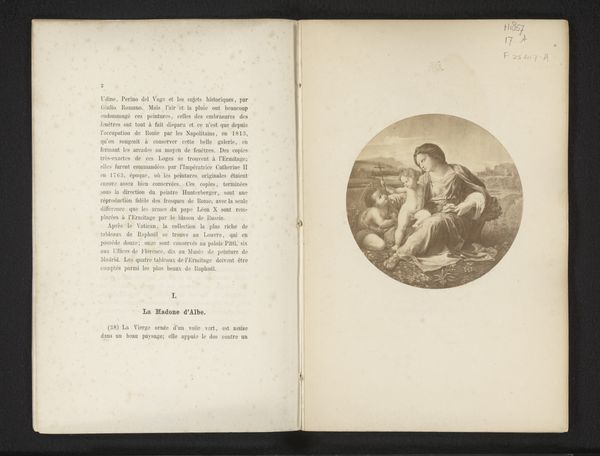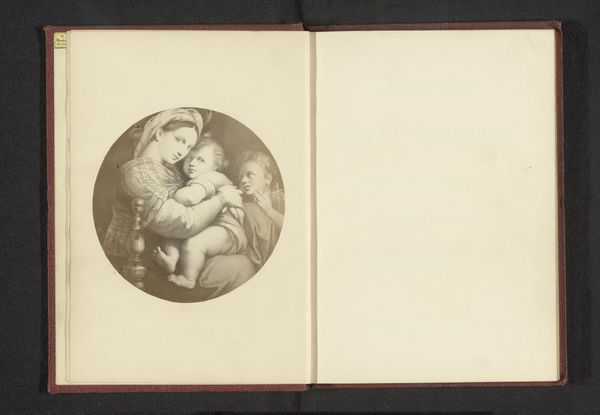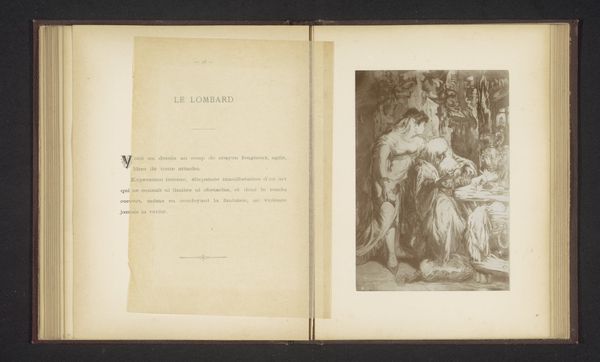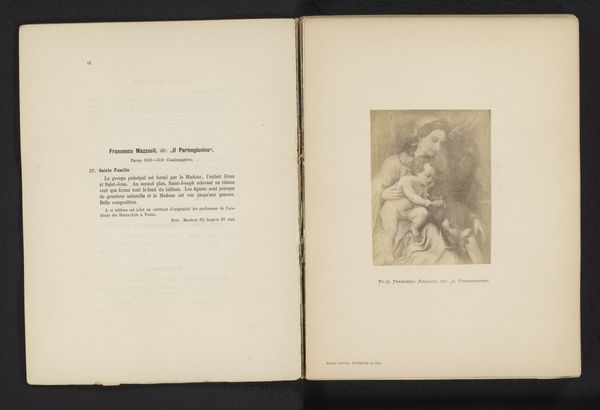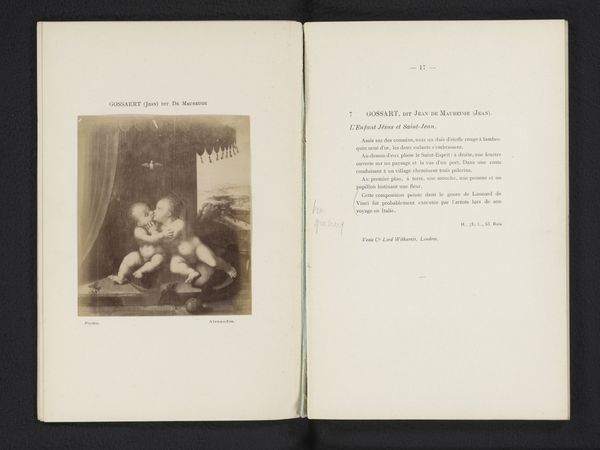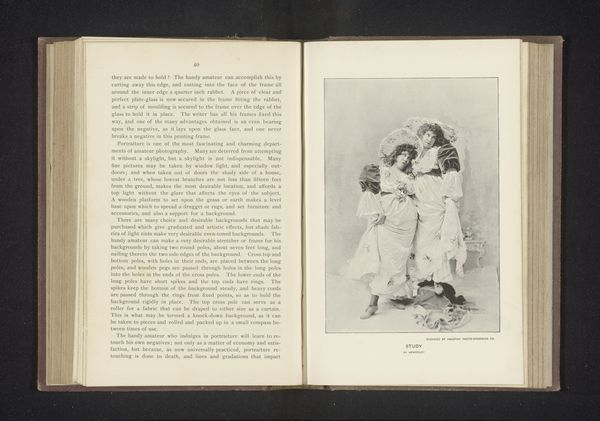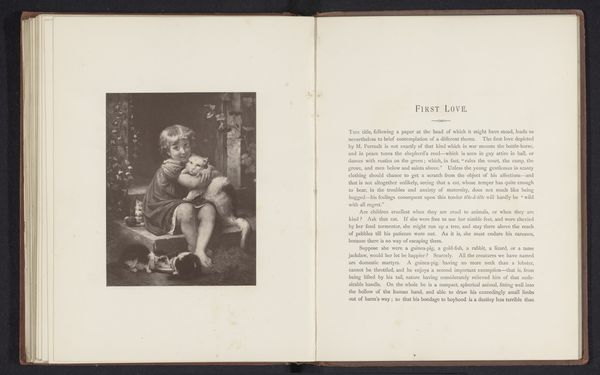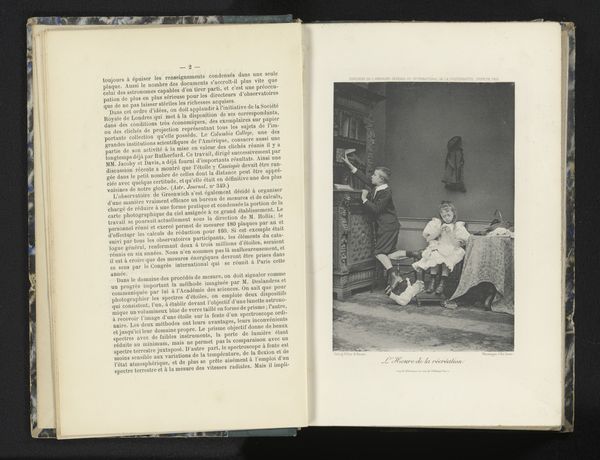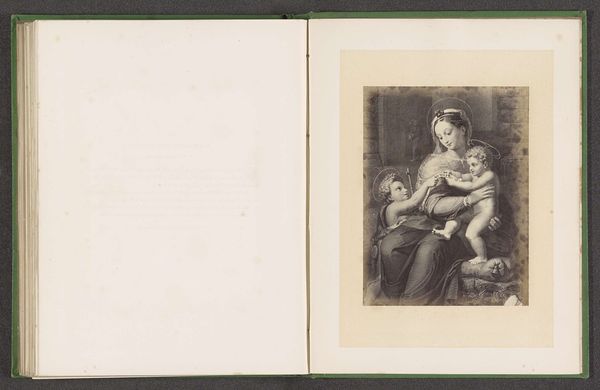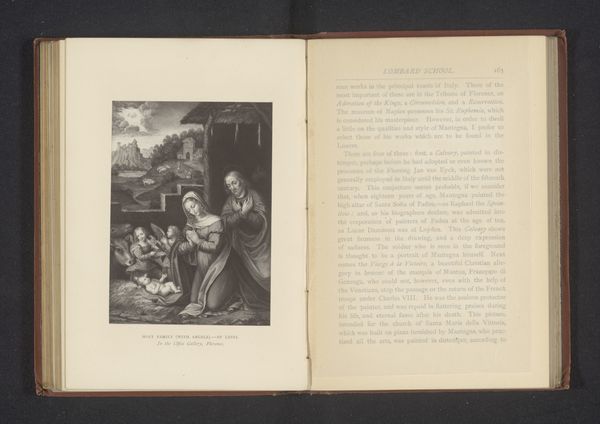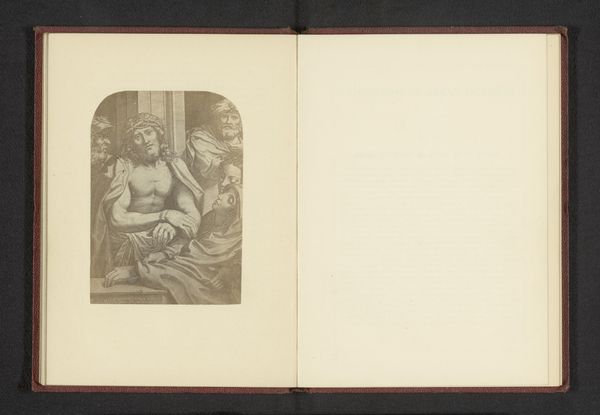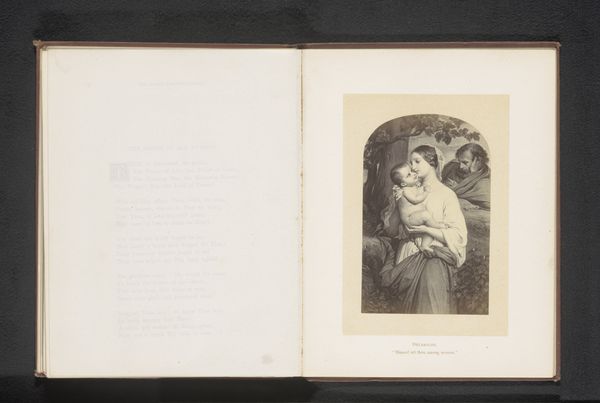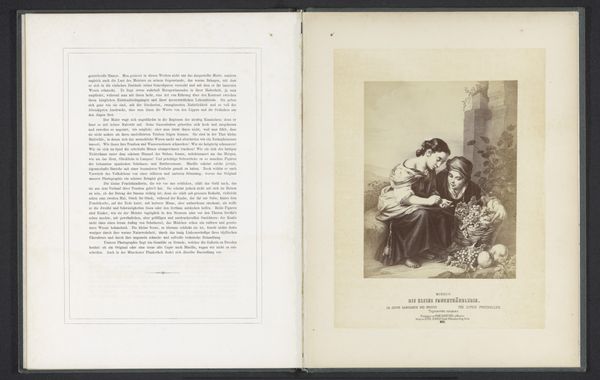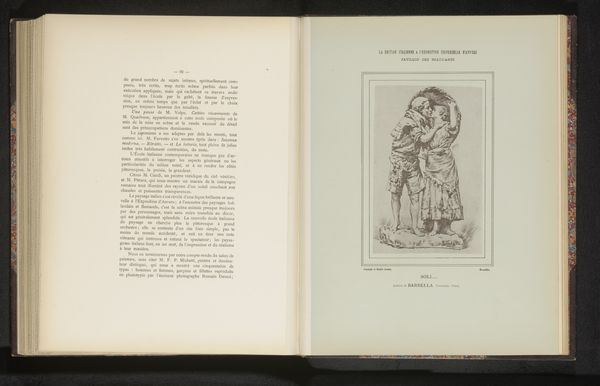
Fotoreproductie van het schilderij La vierge à l'enfant et saint Joseph door Rafaël before 1866
0:00
0:00
print, oil-paint, paper, photography, gelatin-silver-print
#
portrait
# print
#
impressionism
#
oil-paint
#
figuration
#
paper
#
11_renaissance
#
photography
#
gelatin-silver-print
#
history-painting
#
italian-renaissance
Dimensions: height 131 mm, width 99 mm
Copyright: Rijks Museum: Open Domain
Editor: Here we have a photographic reproduction of Raphael's painting, "La vierge à l'enfant et saint Joseph," taken before 1866 by Ch. MülIer & Co. It’s rendered in gelatin silver print. The sepia tones give it such a muted, almost melancholic quality. What do you see when you look at this, in terms of its deeper context? Curator: It’s interesting to consider this reproduction not just as a copy, but as an artifact in its own right. Photography in the mid-19th century democratized access to art, but it also transformed the original into a commodity. Think about the power dynamics at play – who had access to the original Raphael, and who then had access to *this* image? How did it shape perceptions of the Renaissance, especially for those outside elite circles? Editor: That's a perspective I hadn't considered. It feels a little…removed, like a copy of a copy. Does the choice to photograph rather than, say, engrave the image, play into this idea of commodification? Curator: Absolutely. Photography held a certain claim to objectivity, a supposedly ‘true’ representation. But even then, choices were made - about lighting, composition, printing. Consider, too, how this photographic reproduction circulated, where it was displayed, who owned it. This image then becomes entwined with the complex relationships of power, access, and representation within nineteenth-century society. What values are being represented by disseminating the idea of The Holy Family in such a manner? Editor: So it's not just about appreciating Raphael's artistry, but understanding how this image functioned culturally and socially in its own time, and ours. Curator: Exactly. It is understanding art as active within culture. Thinking about whose gaze it was designed to appeal to and what ideals they valued allows the piece to tell more of its story. Editor: That really makes me rethink the role of reproduction and how it shapes our understanding of art history. Thanks!
Comments
No comments
Be the first to comment and join the conversation on the ultimate creative platform.
